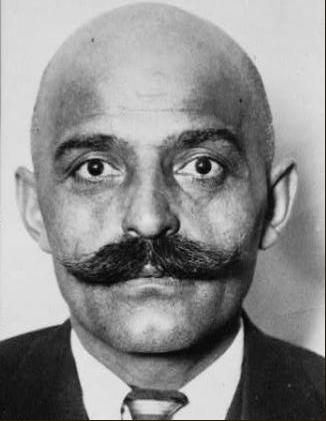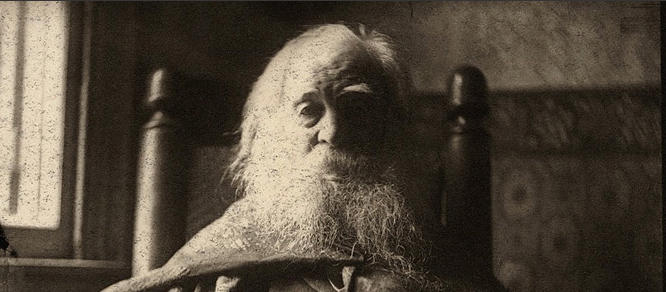1
When I was eight, I watched a TV show about an air force pilot who gets stuck outside of time. For this pilot an hour was about a minute for everybody else. The story revolved around two main points: the first was that the pilot discovered that his daughter—she was on a tricycle and looked to be about three years old—was about to be hit by a runaway truck. The second was that he was followed everywhere by a strange, shadowy presence. The first plot point, the little girl, was resolved by the pilot tying some cords to the truck’s handbrake and fastening them in such a way that as the truck continued to roll the handbrake was pulled back. (There was no driver in the truck.) The second plot point, the mysterious presence, was resolved when the pilot confronted him, and the shadowy figure revealed that he was forever stuck outside of time, and that the pilot would also be struck outside of time if he didn’t return to the jet, which was in the middle of landing, and take the position he was when he was thrown—apparently by the lurching of the jet during landing—outside of time. As I understood it, the mysterious figure had hoped to replace the pilot in the jet and return to normal time, but in the end his conscience got the better of him, and he decided to help the pilot.
For reasons that were beyond me at the time the idea of being stuck outside time scared the hell out of me. And as a child I watched plenty of movies about monsters and ghosts and wasn’t bothered at all. Maybe it was this show that was the seed of my lifelong interest in the structure of time.
Throughout my life I have made of point of reading books and watching movies about time, and certainly the most popular idea about time is time travel: the notion that, by some means or other, the hero of the story is able to travel back and forth in time. It’s a very attractive idea: to see the future, or to go back in the past and change events. It seems to have captivated our collective consciousness. Every year there are new movies about time travel. Some have been enormously popular, like the Back to the Future series. Two of my favorites are Slaughterhouse-Five and Happy Accidents.
2
I do believe in time travel. Time travel to the future. Time flows like a river and it seems as if each of us is carried relentlessly along by time’s current. But time is like a river in another way. It flows at different speeds in different places and that is the key to traveling into the future. ~ Stephen Hawking
But in order to understand if and how time travel is possible, we have to first know something about the structure, or dimensions, of time and also understand how we perceive these dimensions.
Everybody knows that the first three dimensions refer to space: the line, the plane, and the solid. A line has length, but no width or depth. A plane has length and width, but no depth (or height). And a solid has length, width, and depth. We perceive our world in three dimensions of space, and so we can easily imagine all three. We take three-dimensional space for granted; we think of it as reality.
Let’s imagine for a moment a boat traveling on a calm lake. A line in this world will be the projected course the boat must take to go from one side of the lake to the other; the plane is the surface of the lake; and the boat itself can represent the solid. Now imagine that we can only perceive in two dimensions and that our perception is limited to the surface of our lake. What would we see of the boat? We would only see a slice of the boat where it intersects with the surface of the water. We wouldn’t know anything about the part of the boat above the waterline or below the waterline. We would be blind to its height and depth. Our perception of the boat would be limited, even flawed. We would know only an infinitesimally thin cross-section of the boat; the rest of it we would have to guess at. The ‘reality’ of the boat, as we know it exists because we are capable of perceiving in three dimensions, would be lost to us.
Now imagine that the perception of our lives as a succession of moments along a line is also flawed because of the limitations in the way we perceive time. We think of our lives as starting at birth and ending at death, and that everything in between is the line of our life, which is the fourth dimension or the first dimension of time. But if the fourth dimension is a line of time, then our experience of the fourth dimension is flawed or at least only partially experienced. We are generally not aware of our life as a line. In the state in which we are born, we are, at best, aware of the moment in which we are passing through. To be conscious of our life as a whole is reserved for the experience of higher centers.
If we think of consciousness as a light that originates in the moment, we can easily imagine that, if this light was bright enough, it would begin to illuminate the past and possibly, if it was really bright, the future. Think of a streetlamp along a long unlit road. If you stand directly under that light and it is dimly lit, you only see where you stand. But if is brightly lit, you will, to some degree, see where you came from and where you are going, and the brighter the light shines the more you will see.
With conscious evolution we don’t imagine traveling back to the past or into the future; instead, we learn to extend our vision from the present to include the past and the future.
In order to know the future it is necessary first to know the present in all its details, as well as to know the past. Today is what it is because yesterday was what it was. And if today is like yesterday, tomorrow will be like today. If you want tomorrow to be different, you must make today different. ~ G. I. Gurdjieff
When we speak about higher centers, we are talking about a different perception of time. The experience of the fourth dimension, which begins with self-remembering and being present, is the capacity to see our lives in larger and larger segments, and even, in our highest moments, to see our lives as a whole, as one impression.
This is the first sentence of Kurt Vonnegut’s book Slaughterhouse-Five:
Listen: Billy Pilgrim has come unstuck in time.
The implication is that we are normally stuck in time. But what is struck in time? Certainly not the mind. The mind can easily remember events from the past and imagine events in the future. That we can imagine time travel at all tells us that the mind is not stuck in time. What’s stuck in time is the physical body. In fact I would say that body is a time machine. It’s a machine that allows us to pass through time, though admittedly only in one direction and at a preset speed. Vonnegut’s genius was to have Billy Pilgrim’s consciousness, not his body, travel back and forth in time.
3
If the fourth dimension is a line in time, can we say that the fifth dimension is plane in time? And how can we imagine that?
In Slaughterhouse-Five the idea of free will or choice is a major theme. Billy Pilgrim doesn’t try to change his life. He slips back and forth along the line of his life without ever trying to change its direction. He is a passive observer. In Vonnegut’s world events like war, and even the destruction of the universe, are inevitable. There is no fifth dimension in Slaughterhouse-Five, only the fourth.
When we begin to talk about changing the past, about traveling back in time and changing the events that shaped our lives we are talking about the fifth dimension or recurrence. But not recurrence as Nietzsche understood it. To Nietzsche eternal recurrence was the greatest burden.
What, if some day or night, a demon were to steal after you into your loneliest loneliness and say to you: ‘This life, as you now live it and have lived it, you will have to live once more and innumerable times more; and there will be nothing new in it, but every pain and every joy and every thought and sigh… must return to you—all in the same succession and sequence—even this spider and this moonlight between the trees and even this moment and I myself. The eternal hourglass of existence is turned over again and again—and you with it, speck of dust!’ Would you not throw yourself down and gnash your teeth and curse the demon who spoke thus? ~ Friedrich Nietzsche
Ouspensky saw the possibility of change within the idea of recurrence, but he thought it far from certain that most people would be able to take advantage of the changes that were possible.
Some people may have exactly the same recurrence, other people may have different variations or possibilities; some may go up and others may go down, and many other things. ~ P. D Ouspensky
Within the line that forms our life, there are many possibilities for deviation. For the purposes of illustration, let’s take an extreme example. A woman I know recently decided to stay home instead of going on a trip with a coworker, and the next day she found out that the coworker had been in a serious automobile accident. From the point of view of the fourth dimension, we would say that she was lucky or that it was fate. But from the point of view of the fifth dimension, she went on that trip; she was in that automobile accident. In the fifth dimension the possibilities that don’t happen to us exist. All the roads or lines that we don’t take continue down their natural course.
The fifth dimension means that even though recurrence requires us to live the same life, it doesn’t require us to make the same choices. Recurrence, as Ouspensky understood it, gives us the possibility to live out the choices we don’t actualize in this life. For instance, if you deeply regret certain choices you made in this life, you may recur to explore other choices.
Unfortunately this is not as simple as it sounds. It is not simple because the choices we make depend on our being. And if we don’t change our being, we cannot make better choices. From another point of view you can say that recurrence is about creating tendencies. For example, if you might create a tendency to be strong and disciplined in this life; then when, or if, you recur, the choices you make the next time will be the result of your being, which will be stronger and more disciplined. If, on the other hand, you create a tendency to be idle and lazy in this life, the next time around you will be more lazy and idle.
All acquired tendencies are supposed to repeat themselves. One person acquires a tendency to study or be interested in certain things. He will be interested again. Another acquires a tendency to run away from certain things. Then he will run away again. ~ P. D. Ouspensky
You also need to understand that when I say possibilities, I mean real possibilities. Just as there are many impossibilities in life, there are many impossibilities in recurrence. If, for example, you don’t have a talent for music in this life, you cannot recur as a great musician. On the other hand, if you have a talent for music and you create a tendency to develop that talent in this life, you may, the next time around, be a more accomplished musician. Every life exists within a framework of cause and effect, and you cannot create effects out of nothing; the causes need to be there, even if they are invisible to us in this life.
In Brian Greene’s book The Fabric of the Cosmos he describes one of the paradoxes of time travel by inventing a story about how he was able to travel to the future. In the future he finds that string theory has been proven and is ‘successfully used to describe all known particle properties.’ But he is shocked to find that the breakthrough article on the subject was written by his mother, who has no talent or interest in physics. So after he returns to the past, he starts to train his mother in physics so that she will be able to write the paper that he saw in the future. But it doesn’t go well, so, from his memory, he writes the article himself. The paradox is this: where did the insight and new knowledge come from? He can’t take credit for it, and his mother can’t either.
Apparently, in a world that allows time travel to the past and to the future, knowledge can materialize out of thin air. ~ Brian Greene
The first thing that struck me about this example is that there is no possibility that Brian Greene can go to any future in which his mother has written a groundbreaking paper on string theory. This is clearly an impossibility. In any line of time his mother will always be his mother, and if her essence has no capacity for theoretical physics, she cannot possibly make the choices that will allow her to write an important paper on string theory. This would be like saying that he went to future and found that his favorite dog had turned into a cat. There are no choices that will allow his dog to become a cat. He may choose not have a dog and have a pet cat instead, but that doesn’t change the fact that dog he had chosen in the first place is still a dog.
4
From the point of our spiritual evolution I tend to think of recurrence as supplemental to reincarnation. I don’t think an evolving being would be interested in recurring endlessly in the same life. Given that one life would, in the end, have a very limited framework of possibilities, it just seems more likely that, after a few recurrences, a being that was interested in growth would want to move on to a new and wider experience.
So is our dream of time travel just that, a dream?
I think the main thing to understand here is that our experience of the universe is not objective. We cannot get out of ourselves and study time because we are time-perceiving beings. And we can’t physically travel back to the past or forward to the future because our bodies, which are made up of a certain kind of matter, are not designed to withstand the laws that dictate time travel. The two most widely talked about methods of time travel are 1) building a ship that can travel near the speed of light, which would slow time down to the point that, when we returned to earth, we would find ourselves in what would be, for us, the future, and 2) somehow passing through a black hole and surviving.
In the first case we cannot build ships of any material that we know of that can travel near the speed of light and if we could it is extremely questionable whether we could survive the rigors of traveling at such a speed.
The frailty of the human body is another practical limitation [to time travel]: the acceleration required to reach such high speeds [the speed of light] in a reasonable length of time is well beyond what the body can withstand. ~ Brian Greene
In the second case the gravitational pull of a black hole is so powerful that nothing, not even light, can escape. So again we come up against the limitations of having our consciousness connected to a physical body.
If we want to visit other times and remember what we experienced, then the only real possibility seems to be to connect our perception to an entirely different level of matter. And we can do that; we can do it through conscious evolution, through the creation of an astral body that is free from the laws that restrict the physical body.
Our perception of time is more variable than we think. The fourth dimension is within our grasp. Think about your experience. Haven’t you at one time looked at another person and seen, not just that person in that moment, but their history—their suffering, their anger, their compassion, their whole experience of being human on this planet? That’s the fourth dimension. What we feel in that moment is not just a point in that person’s life, it’s a collection of points, which together, make up a line in time.
And if reincarnation and recurrence exist, which seems likely to me, then we will be able to travel to the future and the past. Only first we have to do the work of the moment; we have to be present and use our attention and focus to fashion a lighter and more durable vehicle.
Really, we are all time travelers, and our physical bodies are the time machines that we so badly want to invent.











